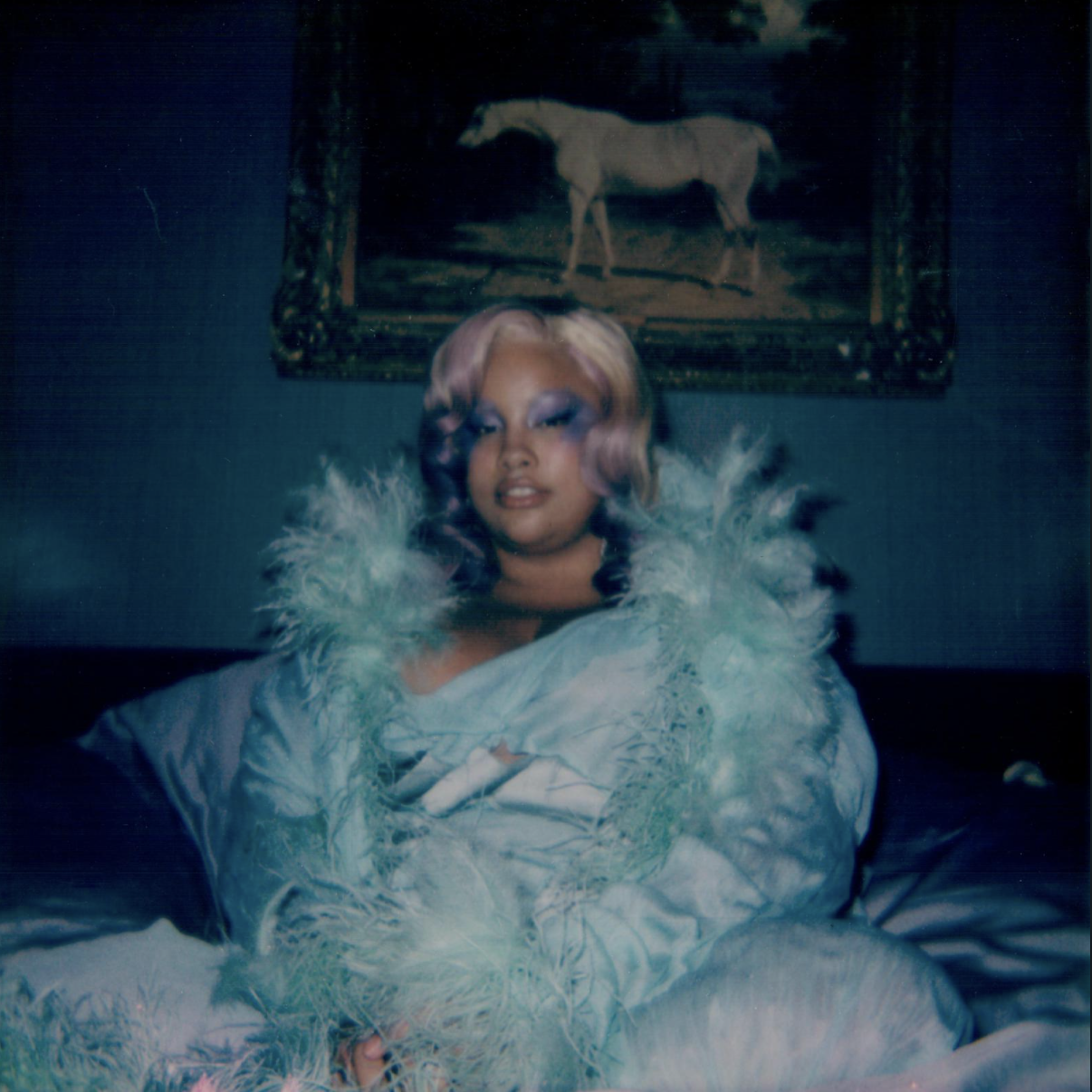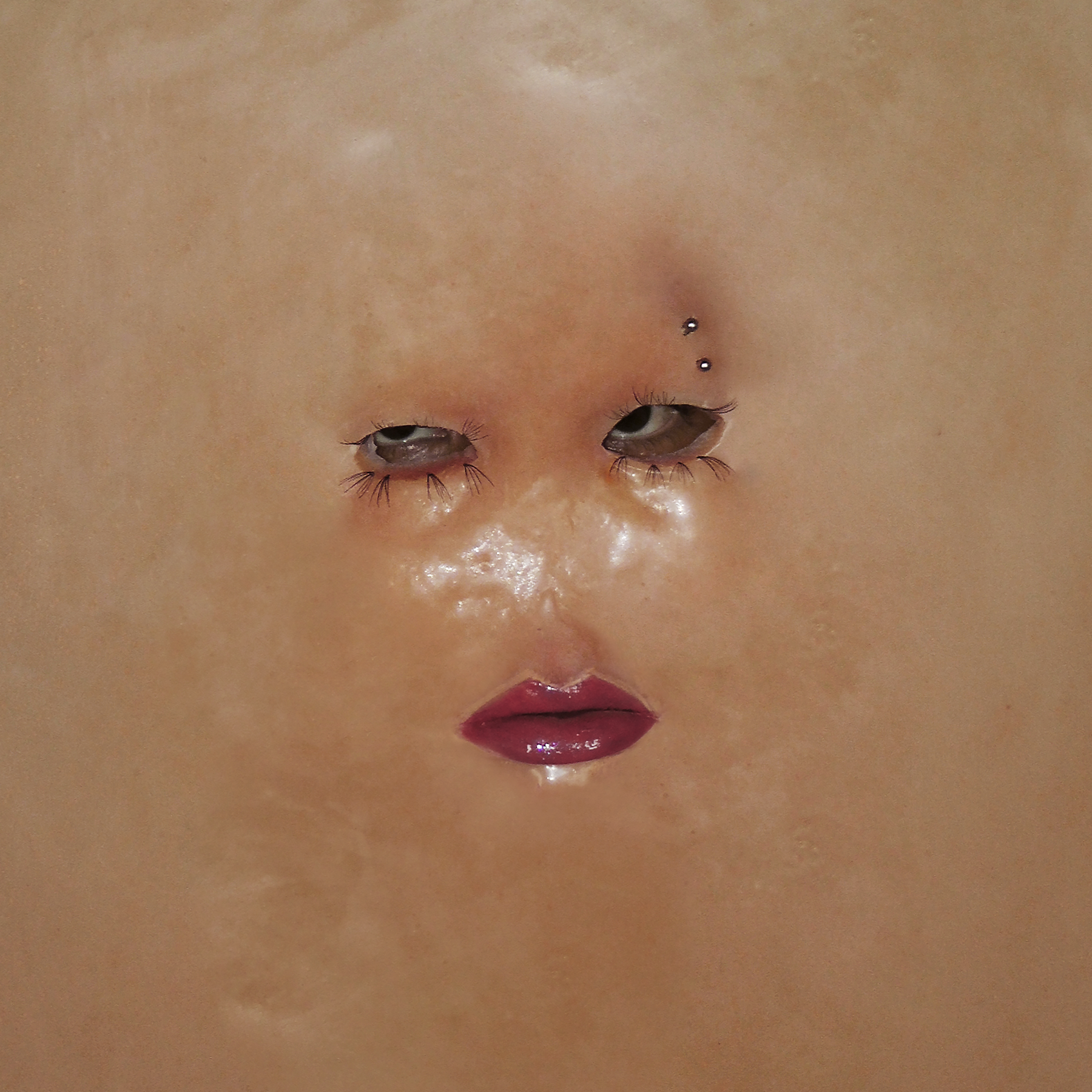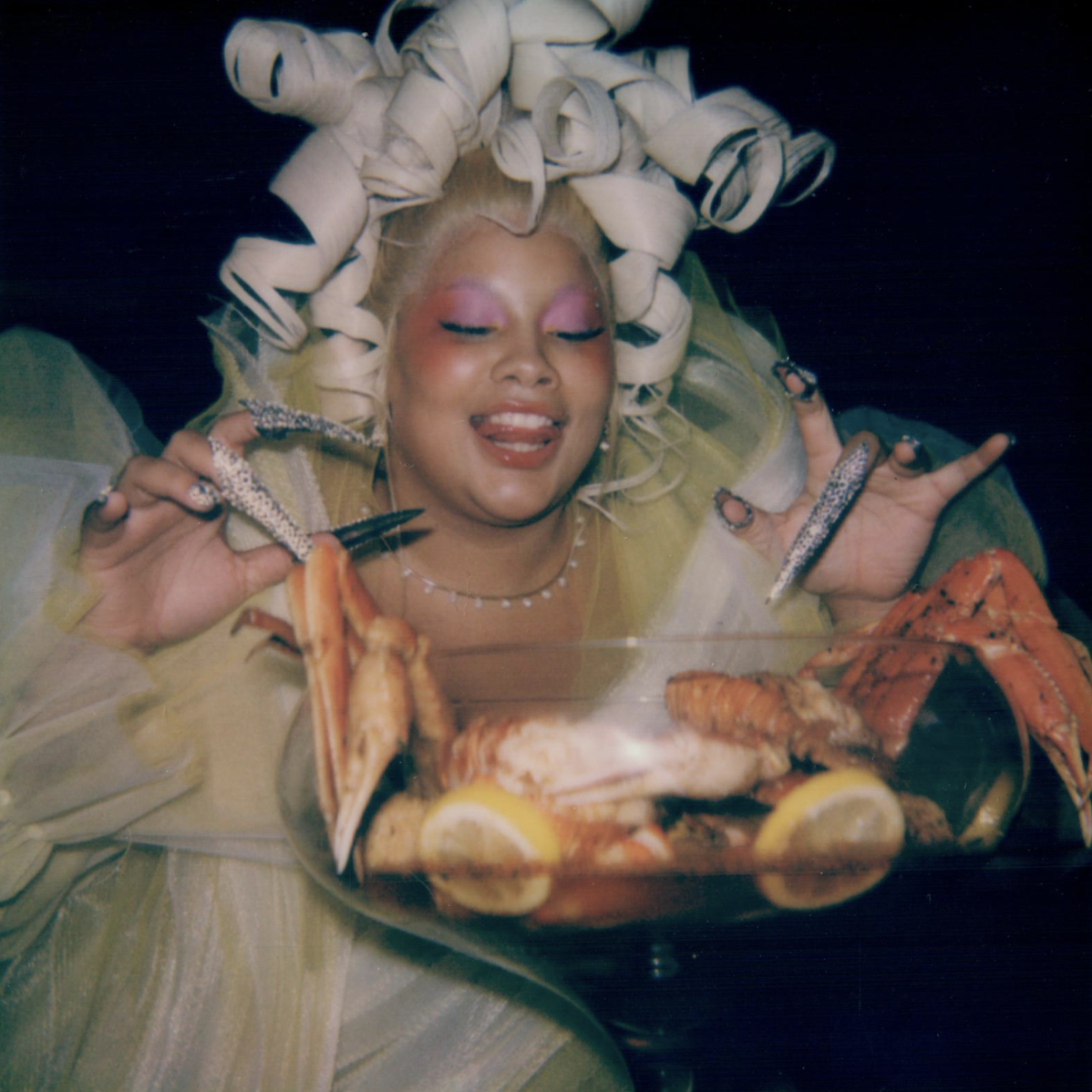Prior to 2016, Shygirl—then still known simply as Blane Muise—had no intentions of pursuing music, much less becoming a record label cofounder and genre-bending rapper. But when she agreed to sing over an industrial beat crafted by friend and producer Sega Bodega, the song’s initial success cracked her world open.
In 2017, while working at a modeling agency, Shygirl cofounded her record label and collective called Nuxxe alongside fellow musicians Bodega, Coucou Chloe, and Oklou. The next year, she quit her full-time gig to focus on her own music, going on to drop her debut EP, Cruel Practice, in May 2018. Sampling iconic horror soundtracks (think Alfred Hitchcock’s Psycho), the project features dark, industrial beats layered with viperous lyrics about sex and desire. London’s underground scene took notice, as did Rihanna; in 2019, she selected one of Shygirl’s songs to soundtrack a Fenty Beauty commercial.
Shy’s latest release arrived last November in the form of a seven-track sophomore EP called ALIAS. Featuring her same brand of brazen lyricism, this time grounded with more garage and house-influenced beats, it was produced by a tight-knit group of friends and regular collaborators including Bodega, Oscar Scheller, Kai Whiston, and the late Sophie (stylized as SOPHIE).
Today, BAZAAR.com is releasing exclusive behind-the-scenes photos from the set of her music video for ALIAS’s fourth track, “Tasty.” In an interview over Zoom earlier this month, Shygirl explained the clip’s inspiration and talked sex, creating in quarantine, her alter egos, and Sophie’s awe-inducing influence.
Did the process of putting together ALIAS feel quite different than writing and recording Cruel Practice?
Yeah, totally. Cruel Practice wasn’t as considered. It was very reactionary. I’d just started making music, and it was like stumbling into a toy shop. I was like, “Oh, I like this,” and, “This feels right.” I hadn’t even thought about other people or how I wanted it to be perceived or what it said about me, because I had just entered the realm of making music.
With ALIAS, I knew what I wanted to hear more of from myself and what I wanted to push for. There were little mini challenges along the way like, “Oh, can I rap this?” Or, “If I rap like that, what will that do?” It was a bit more of a considered development for me.
ALIAS champions the same type of sexual bravado that was also at the center of Cruel Practice. Why are you drawn to exploring that particular topic?
I really like the analogy of sex. I found that with the first EP, I was going through a lot of personal exploration and confusion with some of the feelings that I was living with. I felt really destructive and jealous and just really angsty, and those feelings never really fit in the day-to-day of my life. It didn’t make sense to be so upset or desolate, so torn up about certain things. But in a song, it did.
I didn’t want to tell everyone my business, so the analogy of sex, sometimes it’s literal, sometimes it’s not. It’s something that’s natural and visceral and relatable for a lot of people, and the emotions from other things didn’t always seem so relatable.
One of your major collaborators on ALIAS was Sophie. What was working with her like, and how did she influence your art?
Sophie was a really dear friend. It’s interesting, our friendship definitely grew in the experience of making music together. I’d known her since before I was making music, for around six or seven years, but we both became completely changed, and it was hard not to be influenced by that. Someone who transitions publicly and whose very presence was provocative—you’re provoked to be more. Being around someone like that is a once-in-a-lifetime experience. She was so charismatic. You can never understand someone like that, so you’re always in awe of them.
Everyone that Sophie knew and touched has a really beautiful story about her. That’s a really rare thing.
I remember being in the studio with her and working on my song “Slime.” She was like, “Okay, I want something like what Megan Thee Stallion does.” I thought, Okay, what the hell are we doing? I’m really glad that she always pushed some other agenda with me. She was always just trying to think outside of the box, and it made me think outside of the box and be proud of myself and what I could do, because I was always doing something I never thought I was capable of. I always felt really supported. After her death, seeing the messages from everyone, I realized I’m not the only person [who felt that]. Everyone that Sophie knew and touched has a really beautiful story about her. That’s a really rare thing.
The music videos for a few tracks on ALIAS feature four 3D avatars—where did they come from?
I saw this EP as an extended introduction from the first one. I stepped into the room with the first EP, and on the second EP, I’m saying who I am. So I was like, “Okay, what have people been saying about me? What have they got wrong, and where have I failed in introducing myself fully? How can I make up for that?” I listened to the EP when it was done, I was like, “Okay, well, when I wrote this song, this energy came through. And where else does that energy come through for me? Was it this shoot when I looked like this, or when I chose to look like this, or when I left the house and went to the club looking like that?”
To be reductive, I realized four characters were coming out the strongest. I personified them a bit more and used them as conduits for those different energies coming through in the music. It was almost like dissecting myself to better explain myself.
Tell us about which energies each one represents.
There’s Bae, the blonde one who speaks to my youth and the nostalgia of growing up in Southeast London and the influences there. She’s that girl-next-door energy.
Baddie is more of that period that I found in Cruel Practice, that darker energy and more satirical side of myself. A bleak, dark sense of humor. She’s the one who turns every situation to her advantage.
Bonk is more colorful. I’ll go to the corner store dressed in every flower piece I have, and it’s all brightly lit—that’s me on a chill day sometimes, and that’s Bonk. She’s the innocent side of me that is out for the fun in life.
Bovine is my more aloof side. When I’m thinking about newer music and trying to discover different sides of myself, Bovine is that side, because she doesn’t give away too much just yet.
After I came to that conclusion creatively with the visual aspects of it all, like personifying those characteristics that were coming through, the music meant something different to me. Because a lot of it was just subconscious messaging to myself, and once I realized what a message was, it was like, “Oh, okay. Now I really feel complete with this project. I’m really happy with what I was saying to myself with it.”
What’s the story behind the cover art for the EP—it’s a bit creepy, a bit grotesque.
I’d been in lockdown and hadn’t been shooting for ages. I didn’t necessarily miss it at that point. It was like, “Oh, I’m not feeling like being in front of a camera yet.” I was thinking about how I felt kind of dissected with thinking about the characters—the aesthetic I had for the girls was really fun. It had that smooth 3D aesthetic that spoke to club track videos in the late ’90s.
But there is the other side to myself that I like looking at. There’s something about the slightly grotesque where you can’t look away, there’s something beautiful about it. I’ve always done glamorous shots for the covers before, and I just wanted to present myself slightly differently. It was about getting rid of expectations. I was obsessed with this idea of flattening myself out and looking at myself on one plane.
Did you photograph an actual plastic face that looked like that, or was it altered digitally?
It was an actual face. I got a full head cast done. We have different versions of it, and I have one in my house now. I want to get it framed. I don’t know where I’m going to put it. Maybe I’ll put it in the bathroom.
Today, we’re publishing some exclusive behind-the-scenes shots from the set of your “Tasty” video. What was the concept behind it, and why did you go for such a lavish visual treatment?
We filmed both the “Tasty” and “Slime” videos in a studio with a big green screen because of lockdown. At that point, I was like, “Okay, I want to get out now.” Everyone was shooting green screen, and I wanted to feel like I was in a large amount of space, and I wanted everything to be big. That really inspired the concept for “Tasty.” And also, that’s what the song is about. It’s about being free and about presenting a really pretty picture of what life could be like with me. How better to express that than in beautiful gowns and big houses in the countryside?
Tell us about the fingernail extensions in the crab scene—they were such a genius touch.
I was watching Snow White and the Huntsman and in the movie, the evil queen eats the heart out of a sparrow using these little claw rings. I was like, “I want those. I want to be eating food [in my video].” Food is opulence to me. When I go out for a meal, I feel like I’m living the life. I was like, “I’m going to be wearing these long nails, because I don’t deign to touch the food itself.”
This interview has been edited and condensed for clarity.
Source: Read Full Article



